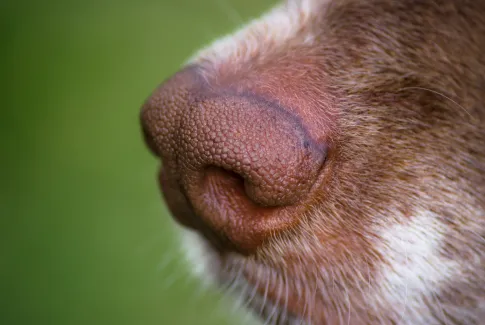
How to take care of your pet's skin during the spring
The arrival of spring brings good weather, and you’ll likely take the opportunity to spend as much time outdoors as possible with your pet. But this change of season also means allergies, shedding, and greater exposure to natural irritants. In this article, we’ll explain how spring can affect your pet’s skin, along with tips on how to prevent issues.
Why is it important to monitor skin changes?
If you notice your dog scratching more than usual, showing red patches, losing more hair, or developing small irritations, don’t ignore it. These signs, while not always indicative of a serious condition, do deserve attention as they may be linked to allergies or environmental factors.
Some signs that could indicate an allergic reaction include:
- Itching and excessive scratching
- Redness in areas like the abdomen or paws
- Constant licking
- Ear infections (otitis)
A simple change in symptoms over the course of the season can provide valuable information to your vet. If these issues only occur during spring, they are most likely caused by environmental allergens.
How do seasonal allergies occur?
Seasonal allergies happen when your pet inhales or comes into contact with an environmental allergen. In an allergic animal, the immune system overreacts, causing inflammation and skin discomfort.
Although you can’t always avoid them completely, you can relieve symptoms and prevent flare-ups as much as possible with a good care routine.
Care and Prevention
Spring can be a wonderful time for your pet, but it also demands extra attention to skin care. With the right care and a few adjustments to your routine, you can prevent discomfort and keep your pet happy, comfortable, and healthy.
- Identify and avoid allergens: If you can identify the allergen, avoid it entirely. If not, try to avoid walking in areas with high pollen levels or right after the grass has been cut, and clean your pet’s paws when you get home.
- Use specific products: There are products that help reduce inflammation and provide relief from symptoms like itching. Products like Skinnia Calm can help soothe irritation and redness while keeping the skin hydrated and restoring its healthy condition.
- Regular baths: Bathing your dog with a shampoo suited to their skin can help remove allergens, dirt, and other irritants that accumulate in their fur. However, overbathing can strip the skin of natural oils. The ideal frequency varies depending on the breed and coat type, but generally, one bath every 3 to 4 weeks is sufficient.
- Don’t neglect the paw pads: Take advantage of the good weather to enjoy walks with your dog, but don’t forget to apply repair products like Skinnia Repair after each walk to prevent cracks in the paw pads.
- Protect your pet from fleas and ticks: It’s essential to keep your pet protected year-round, but especially in spring, when parasites are more active. Consult your veterinarian to choose the best preventive treatment.
Spring is a perfect time to enjoy the outdoors with your pet, but it can also be a challenge for skin care. With a proper routine and the use of specific products like Skinnia Calm, you can help your pet enjoy the season in a healthy, comfortable, and happy way.
Related news
- Care
Summer is the perfect time to enjoy the outdoors with your pet, but it can also bring certain…
- Care
The skin is the largest organ of the horse's body, measuring between five and ten square meters…
- Care
The snout — the visible, moist part of your dog’s nose — is not only key to their extraordinary…


